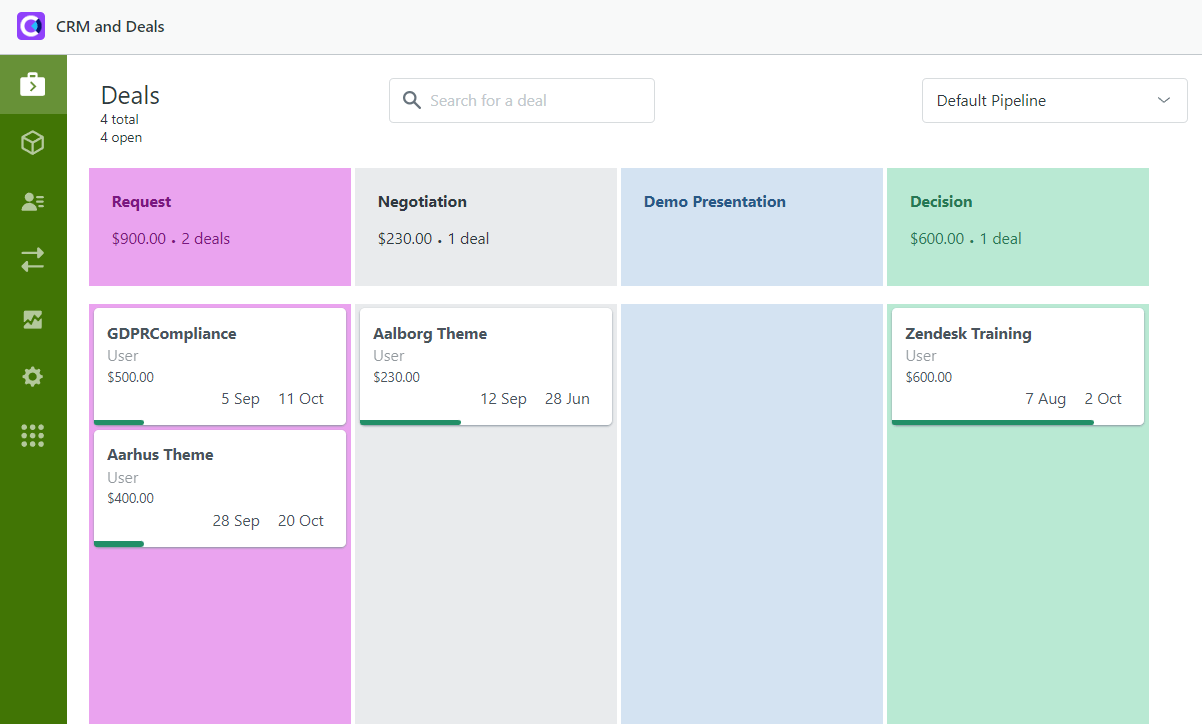Navigating the world of business? One thing's for sure: a top-notch customer service management strategy is your compass. It's the guiding force that steers every interaction, ensuring customers stay and sing your praises.
But what are these tactics, and what can you do to ensure you stand out?
Join us on this journey as we unlock the key secret to help you develop a customer service management strategy your audience will love.
What is a customer service management strategy?
Customer service management is about making sure your customers have a smooth and positive experience with your business each time they interact with your business.
But it’s not purely about answers and fixing problems. It encompasses:
- Understanding customer needs: Speaking statistically, 76% expect companies to understand their needs and expectations. “Serve” is all about finding out what your customers want so that you can provide it to them. That means listening to feedback, finding trends, and guessing what may be needed in the future.
- Streamlined processes: Respond to customer questions and complaints promptly and efficiently. This could mean purchasing software of a particular kind, training employees, or setting up channels of assistance with customers.
- Training and development: Your customer team must be trained properly, understand how to listen and work with customer queries, and have access to the right tools to deliver an effective service.
- Feedback loop: A good customer service management system is constantly evolving. This means getting feedback often, analysing it, and using it to improve your operations.
- Building relationships: It doesn’t mean solving a single problem. It’s all about creating an ongoing connection with customers where you make them feel special.
The importance of customer service management
Let's chat about something super important: customer service management and customer service strategy plan.
Here's why it's a big deal:
- Keeping your regulars: Imagine you've got this favourite coffee shop. You go there because the barista remembers your name and how you like your latte. That's what good customer service does: it keeps you coming back. And businesses know it's way cheaper to keep you sipping that latte than to find someone new.
- Positive brand reputation: In the age of social media, a single negative experience can spread like wildfire. Conversely, consistent positive interactions can bolster your brand's image, making you a preferred choice in the market.
- More sales: Picture this: you walk into a store, and the staff is super helpful. You may end up buying more than you planned. That's the magic of excellent service — it doesn't just keep customers; it lets them happily open their wallets wider.
The main advantages of customer service management
Now, let's delve into the myriad benefits of customer service management that a well-executed customer service management system brings to the table.
Enhanced customer retention
One of the standout benefits of customer service management is the ability to keep customers loyal. Like how a favourite cafe might keep you returning with its consistent quality and warm greetings, businesses with effective customer service strategies ensure their patrons return. It's known that retaining customers is more cost-effective than acquiring new ones.
Boosted word-of-mouth marketing
When customers have a positive experience, they talk. They'll share their stories with friends, family, and social media. This organic form of marketing is invaluable. A recommendation from a trusted source often carries more weight than traditional advertising.
Solidified brand reputation
Today, a brand's reputation can be made or broken online. Effective customer service management ensures positive interactions outweigh the negative, building a brand's image as reliable and customer-centric.
Increased revenue streams
Good customer service doesn't just retain customers; it often encourages them to spend more. When customers feel valued and understood, they're more likely to make additional purchases or opt for premium offerings.
Feedback-driven improvement
With a robust customer service management system, businesses can continuously collect and analyse feedback. This allows them to adapt, innovate, and improve, meeting evolving customer needs and expectations.
5 examples of customer service management
1. Real-time chat support
Many online businesses and e-commerce platforms now offer live chat features. Customers who have a query or face an issue while shopping can instantly connect with a representative. This quick service not only helps to resolve problems quickly but also improves the overall shopping experience.
2. Personalized customer experiences
Imagine something like Netflix or Spotify. They study user actions and personal preferences to suggest films, series, or music. Data and analytics fuel this personal touch and help users perceive that they matter — driving loyalty to the platform.
3. Feedback surveys and follow-ups
Many companies send out feedback surveys after you’ve purchased from them or used their services. Through gathering feedback from customers, companies can uncover opportunities for improvement. Furthermore, if there is any negative review, taking the feedback and engaging personally with the user to resolve the issue can transform a negative experience into a positive one.
4. Loyalty programs and rewards
Many retail stores and cafes offer loyalty cards or apps. Every purchase earns points, which can later be redeemed for discounts or free items. This encourages repeat business and makes the customer feel appreciated for their patronage.
5. Comprehensive FAQ sections and self-service portals
Some companies allow customers to independently search for answers through FAQ sections or self-service portals on the website. This method serves those who opt for self-help options and allows off-load work from customer support personnel.
How to develop a customer service management strategy?

Customer service management strategy creation is a challenging journey. But businesses can map through this terrain if they have the proper guidance and know effective customer service management techniques.
No matter where you are in the process or how you’re tweaking it, following these steps will help you create a customer service management strategy that engages customers and grows your business simultaneously.
1. Understand your customers
Start with understanding your customers inside and out before doing anything else. Survey, run focus groups, analyze their purchase behaviour. The more you learn about their desires, preferences, and pain points, the more you can help them.
2. Set clear objectives
Decide what you’re trying to accomplish with your strategy. Is it increased customer retention? Faster response times? Higher satisfaction scores? By having well-defined SMART goals in place, you can direct your efforts and have a reference point for knowing when you’ve accomplished your goals.
3. Train your team
Your customer service staff is your face. Take advantage of formal training sessions to equip them with the relevant capabilities, expertise, and instruments: product knowledge, effective communication, and empathy training.
4. Implement the right tools
CRM system tools or chatbots for example would be suitable for larger businesses with specific requirements. These tools can automate workflows, generate useful data insights and improve customer experience.
5. Monitor and collect feedback
Get feedback regularly on both sides (customers and your customer service team). This will reveal improvement areas, potential bottlenecks, and developing trends or issues.
6. Analyze and adapt
Analyze the success of your strategy using the data and feedback gathered. Watch for trends, observe what is converting and what isn’t, and be willing to pivot and change your approach with these observations.
7. Foster a customer-centric culture
Cultivate an organization culture that values, more than anything else, keeping your customers happy. The impact of your strategy gets boosted when product development, marketing, and all other departments think of the customer first.
8. Continuously innovate
The customer service industry is constantly changing. Keep your fingers on the pulse of what’s happening in the industry. Regularly revisit and refine your strategy to stay ahead of the curve and continuously meet customer expectations.
Measuring the success of your customer service management strategy
No matter the well-crafted plan you create, it will need periodic review eventually. Knowing how practical your approach is in customer service really matters.
But how do you tell whether your approach is on track or not?
Let’s dive into the metrics and techniques to measure the success of your customer service management strategy.
Customer Satisfaction Score (CSAT)
It’s a simple metric where you ask the customer to score an experience with your service on a scale usually between 1–5. The response is immediately available for each interaction or transaction.
Net Promoter Score (NPS)
NPS measures customer loyalty by asking one simple question: How likely, on a scale of 0–10, are you to recommend our company to a colleague or a friend? Customers are grouped into Promoters, Passives, and Detractors based on the scores. The final score of NPS is made by subtracting the percentage of detractors from the percentage of promoters.
Customer Effort Score (CES)
CES measures the ease with which a consumer could get their issue addressed or their question answered. Lower effort tends to result in higher customer retention.
First Contact Resolution (FCR)
This is the percentage of customer problems solved in the first contact. The more efficiently the customer is answered, the higher the FCR rate value.
Average Response Time
Keep an eye on the response time of your team members for customer queries and complaints. Quick response time will usually bring in more satisfied customers.
Customer Churn Rate
It is a measure which shows the rate at which your customers churn off over time. Your service could have a high churn rate, and it can be the case that your users aren’t satisfied with your service.
Customer Retention Rate
The flip side of churn is that this metric measures the percentage of customers you've retained over a given period. A higher retention rate is a positive sign for your strategy.
Volume of Feedback
While not strictly a quantitative metric, keeping tabs on the amount of feedback, both positive and negative, can provide insights into areas of improvement or success.
Employee Satisfaction
The mood and happiness of your customer service team can directly influence the standard of service you deliver. Asking your team regularly about their thoughts can help uncover potential internal problems impacting customer service.
Financial Metrics
Finally, think about financial metrics such as cost per customer, customer lifetime value, and revenue from upsells or cross-sells. They can create a direct connection between customer service and profitability.
Tools to boost the customer service management strategy
Using the right tools can make a big difference in managing customer service management strategy.
Here's a rundown of some top tools that can elevate your game:
Customer Relationship Management (CRM) systems
Examples: CRM and Deals for Zendesk, HubSpot, Zoho CRM
 CRM and Deals for Zendesk
CRM and Deals for Zendesk
Purpose: These solutions aid companies in managing and understanding all touch points of customer interaction along the customer lifecycle for better communication and higher customer satisfaction.
Live Chat software
Examples: Intercom, LiveChat, Tawk.to
Purpose: Provide live assistance to website visitors: answer their questions on the spot and give a better user experience.
Help Desk software
Examples: Zendesk, Freshdesk, Help Scout
Purpose: Centralize support requests, simplify the handling of tickets, and guarantee timely replies and resolution.
Chatbots and AI assistants
Examples: Drift, MobileMonkey, Watson Assistant
Purpose: Respond immediately to the most frequent questions automatically and offer non-stop customer support so your staff can focus on more challenging issues.
Knowledge Base and FAQ solutions
Examples: Confluence, Document360, Zendesk Guide
Purpose: Provide self-service help for customers to find answers to basic questions rather than contacting customer service.
Feedback and Survey tools
Examples: SurveyMonkey, Typeform, Qualtrics
Purpose: Find out your customers' likes, dislikes, and areas of improvement directly.
Social Media Management tools
Examples: Hootsuite, Buffer, Sprout Social
Purpose: Keep an eye on brand mentions and answer customer questions to maintain the brand's online reputation across social platforms.
Call Center software
Examples: RingCentral, Nextiva, Aircall
Purpose: Handle incoming and outgoing calls, track call quality, and ensure smooth communication with customers on the phone.
Analytics and Reporting tools
Examples: Google Analytics, Mixpanel, Tableau
Purpose: Monitor customer actions, measure key metrics and get insights into optimizing your customer satisfaction strategy.
Training and Onboarding platforms
Examples: TalentLMS, Thinkific, Lessonly
Purpose: Train your customer service team properly, ensure they have the most up-to-date product knowledge, and ensure they align with your brand’s service principles.
To wrap up
In the business world, a solid customer service management strategy is the glue that gathers all the customer experiences. Everything from figuring out your customers’ needs to using modern tools, each step is necessary to build a customer service management strategy that hits home.
By measuring success, continuously improving and making the customer the center of every decision, companies can exceed, not only meet, expectations.
So, isn't it time we all put a little more emphasis on those who truly drive our businesses: our customers?







